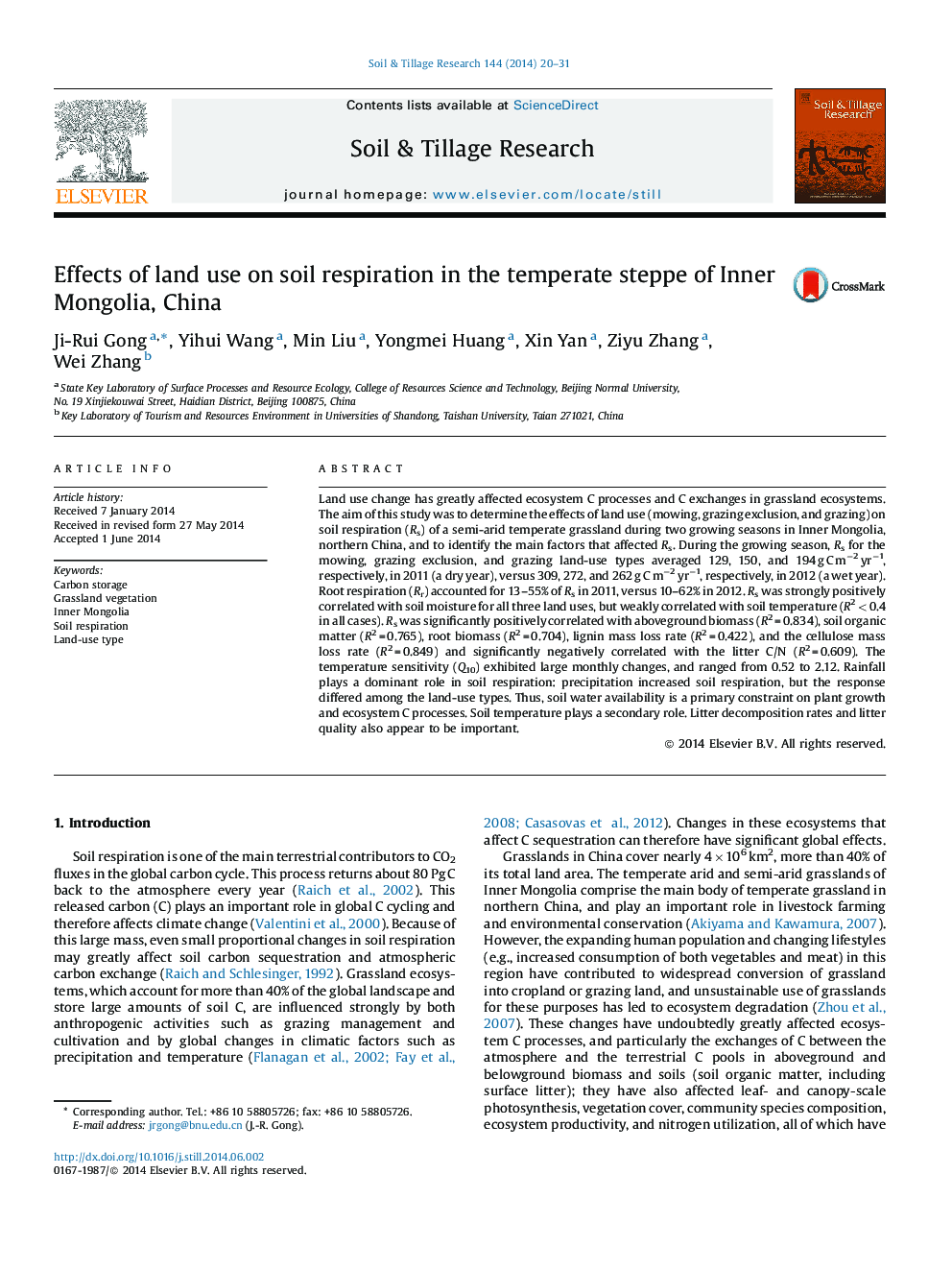| Article ID | Journal | Published Year | Pages | File Type |
|---|---|---|---|---|
| 305662 | Soil and Tillage Research | 2014 | 12 Pages |
•Rs differed greatly among the land-use types of the semi-arid temperate grassland.•Soil water availability is a primary constraint on grass ecosystem C processes.•The contribution of Rr to Rs ranged from 13 to 62% among the land-use type.•Rs were correlated with aboveground biomass, soil organic matter and root biomass.•Litter decomposition and litter quality also appear to be important biotic factors.
Land use change has greatly affected ecosystem C processes and C exchanges in grassland ecosystems. The aim of this study was to determine the effects of land use (mowing, grazing exclusion, and grazing) on soil respiration (Rs) of a semi-arid temperate grassland during two growing seasons in Inner Mongolia, northern China, and to identify the main factors that affected Rs. During the growing season, Rs for the mowing, grazing exclusion, and grazing land-use types averaged 129, 150, and 194 g C m−2 yr−1, respectively, in 2011 (a dry year), versus 309, 272, and 262 g C m−2 yr−1, respectively, in 2012 (a wet year). Root respiration (Rr) accounted for 13–55% of Rs in 2011, versus 10–62% in 2012. Rs was strongly positively correlated with soil moisture for all three land uses, but weakly correlated with soil temperature (R2 < 0.4 in all cases). Rs was significantly positively correlated with aboveground biomass (R2 = 0.834), soil organic matter (R2 = 0.765), root biomass (R2 = 0.704), lignin mass loss rate (R2 = 0.422), and the cellulose mass loss rate (R2 = 0.849) and significantly negatively correlated with the litter C/N (R2 = 0.609). The temperature sensitivity (Q10) exhibited large monthly changes, and ranged from 0.52 to 2.12. Rainfall plays a dominant role in soil respiration: precipitation increased soil respiration, but the response differed among the land-use types. Thus, soil water availability is a primary constraint on plant growth and ecosystem C processes. Soil temperature plays a secondary role. Litter decomposition rates and litter quality also appear to be important.
